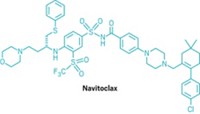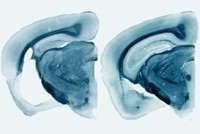Advertisement
Grab your lab coat. Let's get started
Welcome!
Welcome!
Create an account below to get 6 C&EN articles per month, receive newsletters and more - all free.
It seems this is your first time logging in online. Please enter the following information to continue.
As an ACS member you automatically get access to this site. All we need is few more details to create your reading experience.
Not you? Sign in with a different account.
Not you? Sign in with a different account.
ERROR 1
ERROR 1
ERROR 2
ERROR 2
ERROR 2
ERROR 2
ERROR 2
Password and Confirm password must match.
If you have an ACS member number, please enter it here so we can link this account to your membership. (optional)
ERROR 2
ACS values your privacy. By submitting your information, you are gaining access to C&EN and subscribing to our weekly newsletter. We use the information you provide to make your reading experience better, and we will never sell your data to third party members.
Biological Chemistry
Statin Drugs Could Help Patients With Duchenne Muscular Dystrophy
Drug Discovery: Cholesterol-lowering compounds improve muscle function in mice with the disease
by Michael Torrice
September 28, 2015
Chances are you know someone taking a statin: About one in five adults between the ages of 40 and 75 are on one of the cholesterol-lowering drugs.
A new study suggests that the popular drugs could help another set of patients: children with Duchenne muscular dystrophy (DMD), a rare but lethal muscle degeneration disorder. Researchers at the University of Washington report that simvastatin (Zocor) significantly improves muscle function in a mouse model of the disease (Proc. Natl. Acad. Sci. USA 2015, DOI: 10.1073/pnas.1509536112).
The compound’s possible therapeutic effects for muscular dystrophy aren’t due to its knack at reducing cholesterol levels. Instead, the researchers think statins could slow the progression of the disease through their known ability to reduce inflammation, oxidative stress, and fibrosis, a form of scarring.
These three processes contribute to the progressive muscle degeneration that leaves those affected by DMD, who are mostly boys, in wheelchairs by the time they reach their teens. The average life expectancy for patients is 25.
DMD “is a very complicated disease, and that’s why, to date, there hasn’t been an effective therapy,” says Nicholas P. Whitehead, who led the study. The disease is caused by mutations in the gene for a muscle protein called dystrophin. This has led some researchers to investigate treatment strategies such as gene therapy to replace the defective dystrophin gene.
These strategies will have to overcome significant technical hurdles and face regulatory scrutiny before they can reach the clinic, so Whitehead and his colleagues have been looking for possible pharmaceutical treatments for the disease that could be approved more quickly. They turned to statins because the drugs are known to reduce oxidative stress, a destructive player in the disease. Also, some of the drugs, such as simvastatin, are approved for use in children.
In a series of experiments, the researchers gave the drug to mice with mutations in their dystrophin gene, starting the treatment at three points along the disease’s progression—before symptoms started, at an early stage, and at a late stage. The drug showed therapeutic effects at each point.
Compared with untreated mice, simvastatin-treated animals had an 85% lower level of creatine kinase, a marker for muscle damage; exerted 40% more force in their hindlimb muscles; and showed 50% less fibrosis in their diaphragms.
“The effects they report are very substantial and compare well with genetic methods that restore the expression of dystrophin,” says Dominic Wells, a neuromuscular researcher at the Royal Veterinary College at the University of London. “Importantly, they used a dose in the mice that is within the range already approved for use in children, so it would be possible to rapidly translate these findings into the clinic.”
Whitehead says he and his Washington colleague Stanley C. Froehner are planning possible clinical trials in humans with DMD.






Join the conversation
Contact the reporter
Submit a Letter to the Editor for publication
Engage with us on Twitter